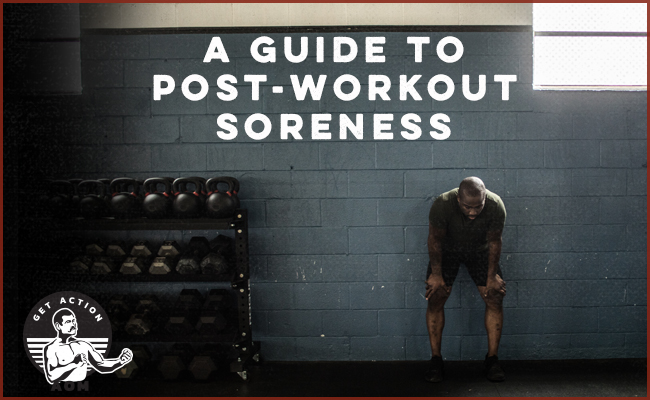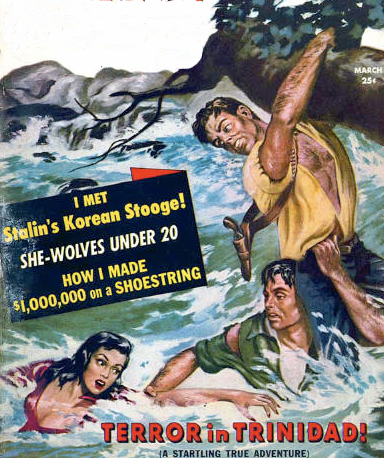
It’s been a few months since you’ve had a consistent workout routine, and you’ve decided that today’s the day you get back on the wagon and begin again.
So you hit the gym after work and decide you’re gonna crush your legs. Leg day, baby! Got to look good in those dude shorty shorts that are in style this summer.
You plow through high rep sets of squats, leg extensions, leg curls, and Bulgarian bag split squats, then wrap it all up with some calf raises. No chicken legs for you. No siree, Bob!
You roll out of bed the next day ready to take on the world, but find you can barely shuffle to the bathroom. Your entire lower body aches. Your butt is sore; your quads are sore; your hamstrings are sore; your groin is sore. Walking is unpleasant, so you’re reduced to sort of waddling about your routine.
The pain and stiffness is there for another couple days, and then, just as quickly as it came, it leaves.
Congratulations. You just experienced “Delayed Onset Muscle Soreness,” otherwise known as DOMS.
DOMS is a common thing for people to experience when they’re first starting to exercise. While uncomfortable, it’s certainly no threat to your health. And the good news is that the more you continue to work out, the less you’ll experience it.
Below, we walk you through this weird post-workout phenomenon and how to deal with it.
What Causes Delayed Onset Muscle Soreness?
When we lift heavy things, tiny, microscopic tears are made in our muscles. In response to that stress, our muscles build back stronger.
But if our muscles are getting torn while lifting weights, why is it that we don’t experience the full brunt of the soreness until a day or two after?
The answer is that it’s not the damage to our muscles causing the soreness, but rather the repair process. And that repair process takes some time to fully kick in.
Here’s what (roughly) happens:
After you work out, your damaged muscles send out inflammatory signals to your body to kickstart the rebuilding process. Macrophages get sent to your muscles to start cleaning up the damaged tissue so your muscles can begin building back. This initial inflammatory response also sends water to your muscles which causes them to swell, making them appear to have grown after a single workout. (They haven’t really, though; here’s how long it’ll take for your muscles to actually increase in size.) Another substance called bradykinin is sent to your muscles to help with repair. It causes an increase in nerve growth factor, and nerve growth factor makes your nerve endings more sensitive. So whenever you move your already inflamed muscles, they hurt even more because the nerve endings around those muscles are hypersensitive.
One thing to note is that there’s a specific part of a movement that causes the most muscle damage and consequently the most DOMS: the eccentric.
Eccentric movements occur when a muscle is trying to shorten but is forced by an external load to lengthen. Pretty much anytime you’re lowering the weight on a lift, that’s an eccentric movement. You’re also doing eccentric movements when you run downhill.
How to Treat DOMS
DOMS can be painful, but it’s temporary and not debilitating. The pain and stiffness will peak 24-72 hours after your workout, and go away on its own in about the same span of time (in some cases, it can take up to a week to completely disappear). If it’s really bothering you, here are some things to try:
- Take NSAIDs. NSAIDs like ibuprofen reduce inflammation and pain. Be sure to read our article on how NSAIDs affect your gains.
- Caffeine. Research suggests that caffeine consumption can help reduce DOMS.
- Menthol rub. Whenever I have DOMS, I like to rub in some Bengay or Tiger Balm where it’s sore. To be clear, menthol rubs don’t do anything to reduce inflammation; they just take the edge off the pain a bit.
- Ice baths. The research shows that ice baths don’t do much in reducing the inflammation of DOMS. Still, in my experience (and the experience of millions of other athletes), ice baths feel good when you’ve got it. It’s probably placebo, but who cares if it helps reduce the pain of DOMS?
- Movement. Consider this the hair of the dog treatment: Movement gave you DOMS, and movement will help alleviate it. While your legs might feel super sore the day after your intense leg workout, try to get in some light movement anyway. Take a walk. Do some air squats. Do some MovNat. Remember: motion is lotion.
The best treatment for DOMS, however, is simply time. Again, DOMS is caused by tears in your muscles. The pain will go away when they heal and become stronger, and that takes time.
Exercising With DOMS
If you’re still sore with DOMS on your next training day, it’s okay to train. Just take your time warming up. Do some light cardio and some foam rolling to prep your body for the workout. You’ll be surprised how much the pain goes away during your warm-ups. If you’re still feeling sore after your warm-up, listen to your body and lighten up your training.
The More You Train, the Less You Get DOMS
The interesting thing about DOMS is that it’s primarily an affliction of beginner exercisers. As you exercise regularly, your weak muscle fibers get stronger, which means you’ll become less susceptible to the condition. And the interesting thing is that you’ll be able to get stronger without experiencing DOMS. This is an important point. A popular misconception is that you have to be sore after every workout if you want to build muscle. Not so.
I’ve noticed this in my own training history. When I first started regular barbell training, DOMS was a regular thing for me for the first couple weeks. Six years later, I rarely get DOMS, despite steadily increasing the size and strength of my muscles.
The one thing that will bring back the DOMS is whenever I incorporate high rep sets into my training. When I put in a lot of reps, I’m feeling the DOMS the next day. But then it goes away after my body adapts.







